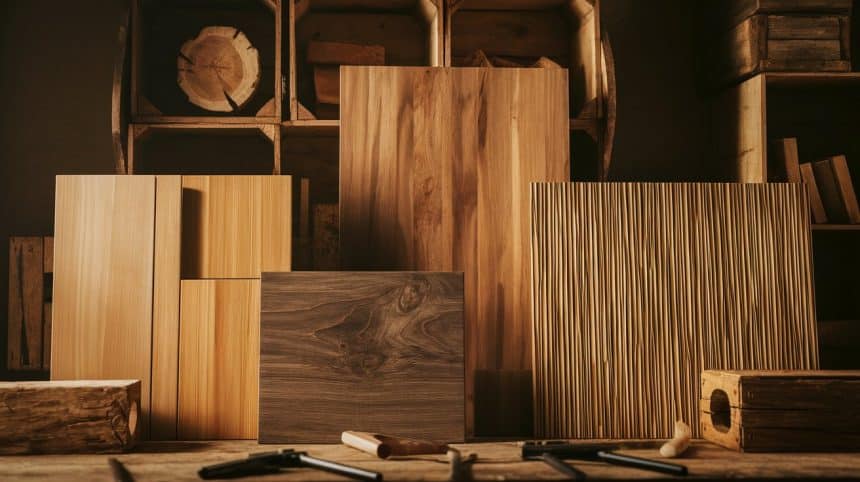Not all wood is what it seems—some is smarter, stronger, and even greener than what nature provides. Have you ever wondered what really makes up your furniture, cabinets, or the structure of your home?
Most people assume they’re looking at natural wood, but there’s a good chance it’s manufactured wood working behind the scenes.
This modern material offers remarkable benefits that traditional lumber can’t match: it stays straighter, costs less, and helps protect our forests.
From the sleek cabinets in high-end kitchens to the sturdy subflooring beneath your feet, manufactured wood has quietly become the backbone of our built environment.
Read on to learn how this creative material shapes your daily life and why choosing the right type matters for your next project.
The Fascinating Evolution of Manufactured Wood: History
Manufactured wood products emerged as a practical solution during the early 20th century, when the construction industry required more stable and uniform building materials.
The earliest form—plywood—dates back to ancient Egypt, but modern manufacturing techniques took shape during the industrial boom.
World War II accelerated development dramatically as the military needed strong, lightweight materials for aircraft and boats. This demand spurred research into the development of improved adhesives and manufacturing methods.
As construction methods advanced in the 1940s and 1950s, engineers found ways to make wood products more consistent and durable.
Today’s manufactured wood is the result of decades of improvements in production techniques and adhesive technology.
Manufactured Wood 101: What Exactly Is It?
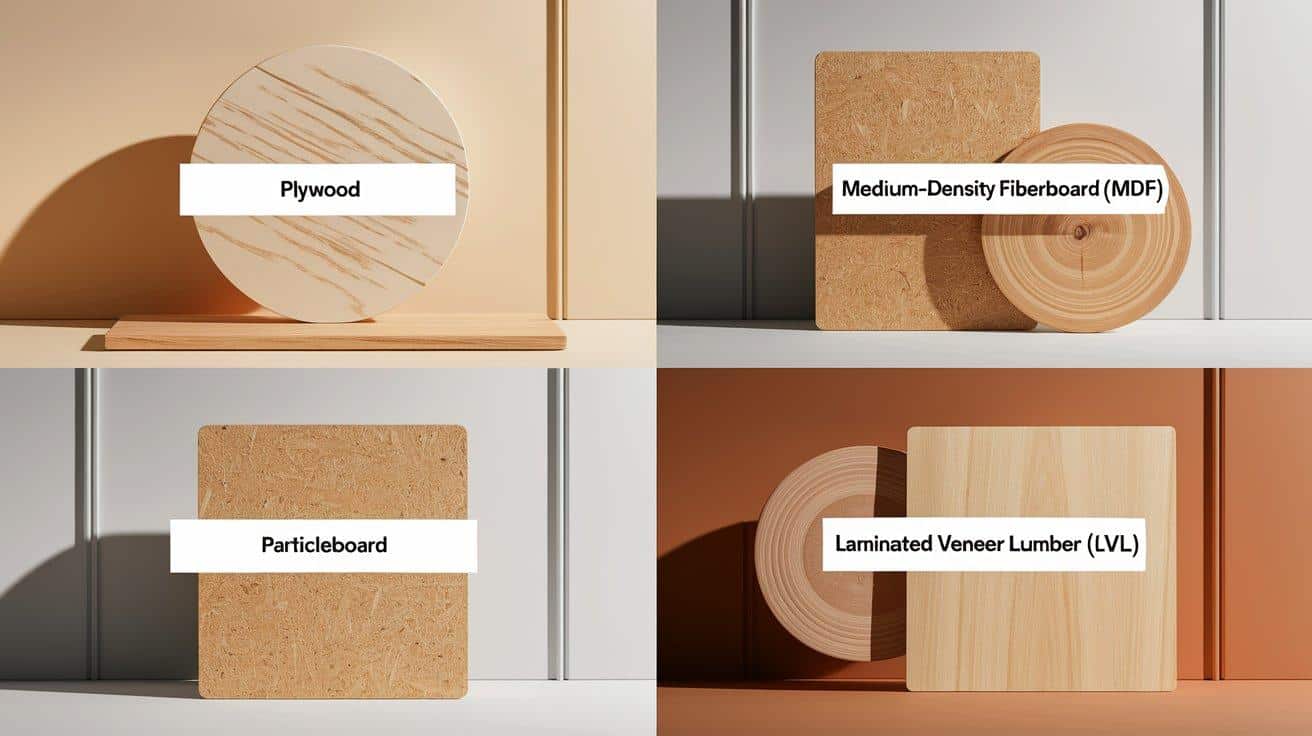
Manufactured wood, often referred to as engineered wood, is created by combining wood fibers, particles, veneers, or boards with strong adhesives or resins.
Unlike traditional solid wood, which is cut directly from a tree trunk in large slabs, manufactured wood takes smaller pieces of timber, often wood waste or fast-growing species, and repurposes them into high-performance, versatile building materials.
This process not only maximizes the use of available wood resources but also allows manufacturers to engineer specific qualities into the final products, such as enhanced strength, stability, moisture resistance, and cost efficiency.
By doing so, manufactured wood helps reduce waste and makes construction and furniture-making more sustainable.
There are several popular types of manufactured wood, each designed for different applications:
-
Plywood: Made by stacking thin layers (or “plies”) of wood veneer at right angles and bonding them with strong adhesives. This cross-graining technique gives plywood excellent strength and resistance to warping.
-
Medium-Density Fiberboard (MDF): Produced by breaking down wood fibers and mixing them with wax and resin under heat and pressure. MDF is smooth, dense, and ideal for painted surfaces, cabinetry, and detailed molding work.
-
Particleboard: crafted from wood chips, sawdust, and resin is a cost-effective option commonly used for furniture cores, shelving, and inexpensive cabinetry. It is often covered with a veneer or laminate to improve appearance and durability.
-
Laminated Veneer Lumber (LVL): Consists of multiple thin layers of wood bonded together with adhesives under heat and pressure. LVL is incredibly strong and primarily used in structural applications like beams, headers, and trusses.
Each type of manufactured wood product has its own unique strengths and ideal applications, offering builders, designers, and homeowners greater flexibility and efficiency than ever before. Thanks to ongoing innovation, engineered wood today performs better, lasts longer, and supports more sustainable construction practices compared to many traditional solid wood options.
How Is Manufactured Wood Made?
-
Raw timber is broken down into useful components — peeled into veneers for plywood, ground into fibers for MDF, or processed into particles for particleboard.
-
These wood components are combined with adhesives or resins that securely bind them together.
-
The type of adhesive used influences qualities like water resistance, strength, and structural integrity.
-
The mixture is subjected to intense pressure and heat, forming it into sheets, boards, or beams with precise dimensions.
-
Modern manufacturing is increasingly adopting eco-friendly methods, including the use of recycled wood waste and low-emission adhesives, to minimize its environmental impact.
Manufactured Wood vs Solid Wood: The Real Debate
Both materials have their place in construction and furniture-making, with distinct advantages. The choice between them depends on your specific needs and priorities.
| Feature | Manufactured Wood | Solid Wood |
|---|---|---|
| Stability | Greater dimensional stability with minimal warping | May expand, contract, or warp with humidity changes |
| Consistency | Uniform quality throughout with no knots or irregularities | Varies piece to piece with natural imperfections |
| Cost | Generally more affordable | Typically more expensive, especially for hardwoods |
| Resource Use | Efficient use of forest resources, less waste | Less efficient, requires larger timber |
| Appearance | Uniform but lacks natural character | Unique grain patterns and natural beauty |
| Refinishing | Limited refinishing possibilities | Can be sanded and refinished multiple times |
| Lifespan | Good durability with proper care | Can last for generations under ideal conditions |
| Resale Value | Lower resale value | Higher resale value for quality pieces |
| Moisture Resistance | Varies by type; some types are very susceptible | Varies by species; generally more resistant |
Contrary to common belief, many manufactured wood products are remarkably strong. Engineered beams can support greater loads than similar-sized solid wood in certain applications, and quality plywood can be more resistant to moisture damage than some natural woods.
Why Manufactured Wood Might Be the Future
As the demand for sustainable solutions grows, manufactured wood is stepping into the spotlight — not just as an alternative, but as a smarter, greener choice.
Instead of relying on slow-growing, old-growth forests, engineered wood products utilize fast-growing trees and recycled wood scraps that would otherwise be discarded. It’s innovation that respects the planet.
But sustainability is just the beginning. Today’s scientists and engineers are taking manufactured wood to new heights.
New-generation binding agents, made from natural, eco-friendly sources, are helping reduce harmful emissions, making these materials safer for homes, offices, and the environment alike.
The strength and versatility of manufactured wood are also redefining what’s possible. Cross-Laminated Timber (CLT), for example, is so durable that architects now design mid-rise buildings with it — structures that once would have required heavy concrete or steel. It’s lightweight, strong, and remarkably resilient.
Furthermore, manufacturers can now tailor wood products to meet specific needs, such as adding water resistance for bathroom installations, improving fire protection for commercial spaces, and creating custom finishes for sleek, modern designs.
For homeowners, contractors, and designers, it’s a win-win — better performance at a more affordable cost, without sacrificing style, strength, or environmental responsibility.
The future of construction isn’t about choosing between beauty and sustainability — it’s about embracing materials like manufactured wood that deliver both.
Creative Ways to Use Manufactured Wood to Improve Your Home
1. Stylish Wall Paneling and Accent Walls
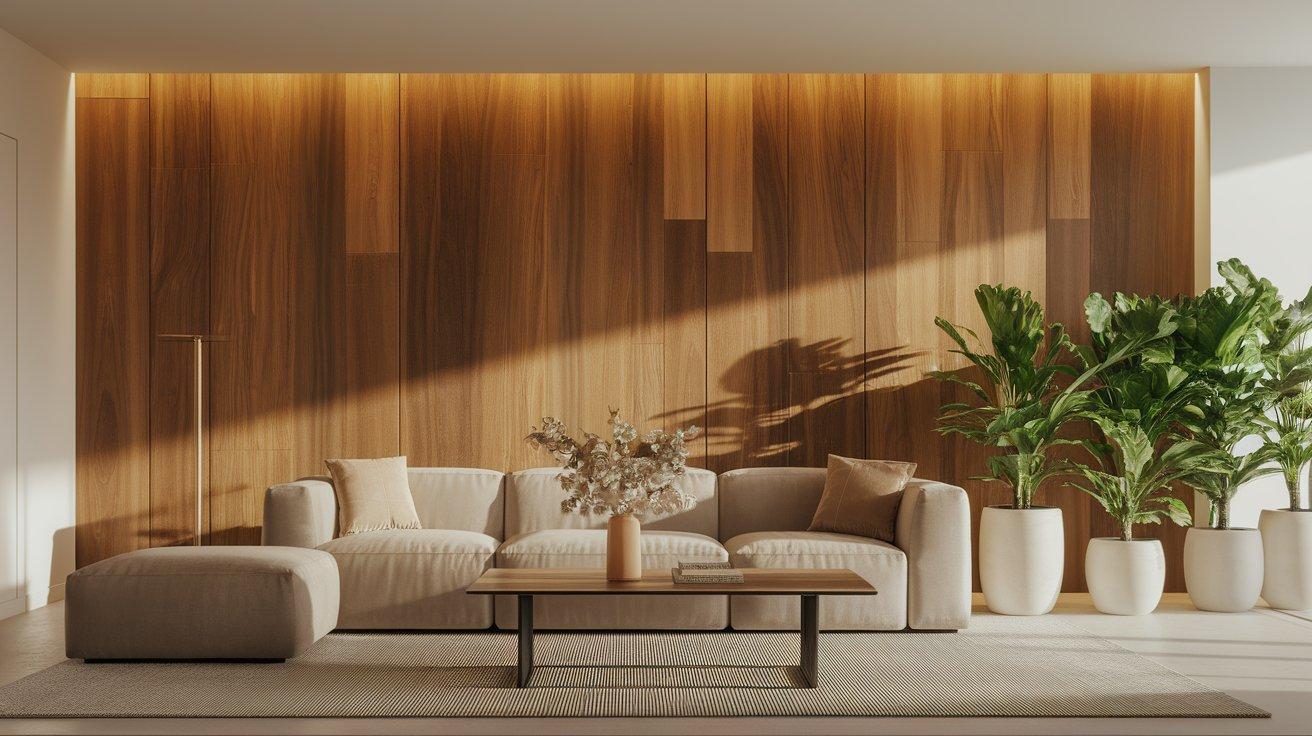
Manufactured wood panels, such as MDF or plywood, can be used to create elegant accent walls. Whether painted, stained, or covered with veneers, they add texture, warmth, and a modern feel to living rooms, bedrooms, and even hallways.
2. Custom Built-In Shelving Units
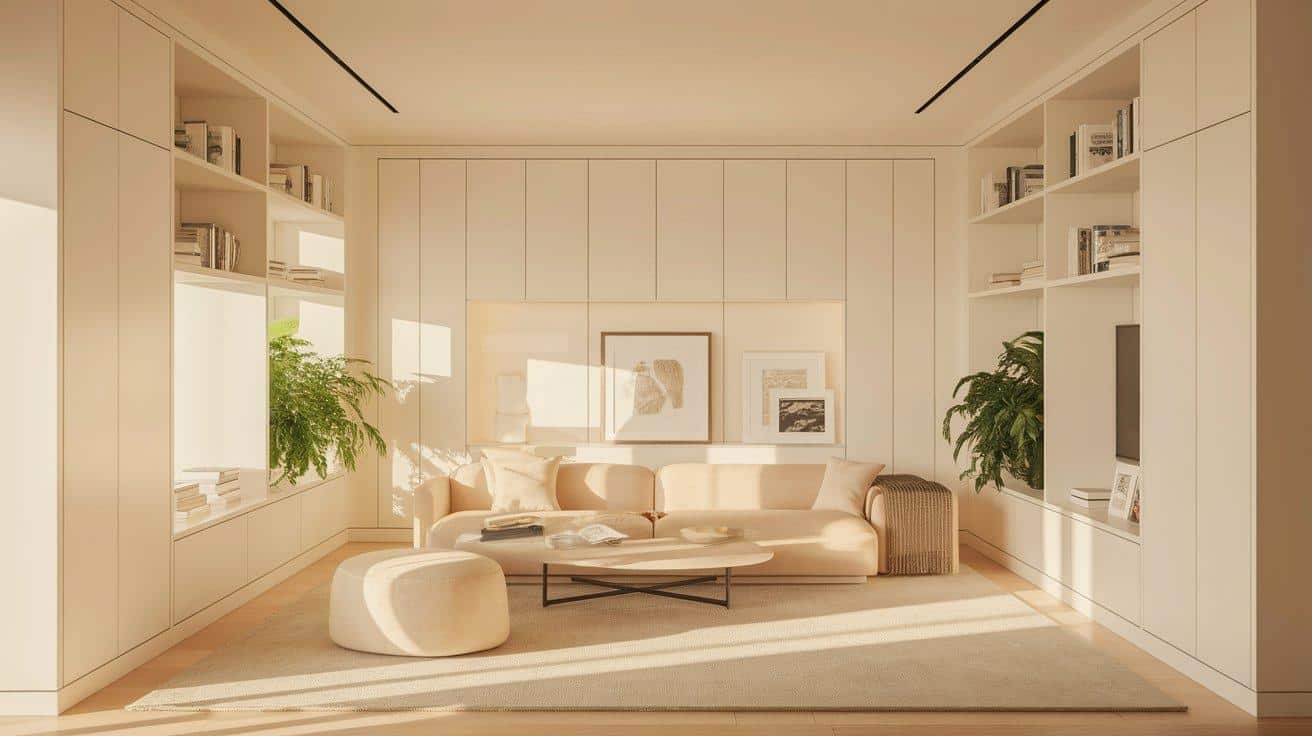
Engineered wood is perfect for building custom shelving and storage units. MDF and plywood can be crafted into sleek, minimalist bookshelves, entertainment centers, or office storage solutions, maximizing space while maintaining a clean and contemporary design.
3. Affordable Kitchen Cabinets
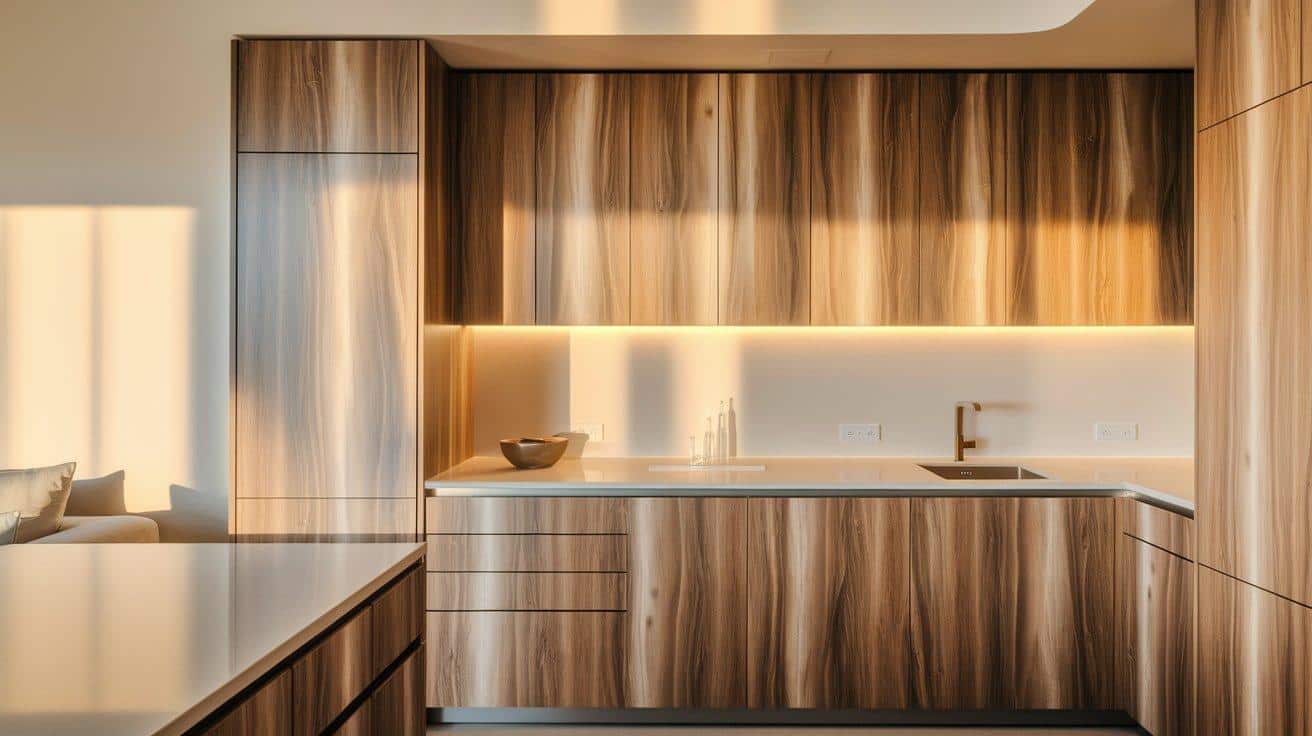
Using MDF or plywood with a high-quality veneer finish can significantly remake a kitchen. These materials provide a durable and smooth surface for cabinets and drawers, offering a polished look at a more affordable price compared to solid wood.
4. Floating Wood Shelves for a Modern Touch
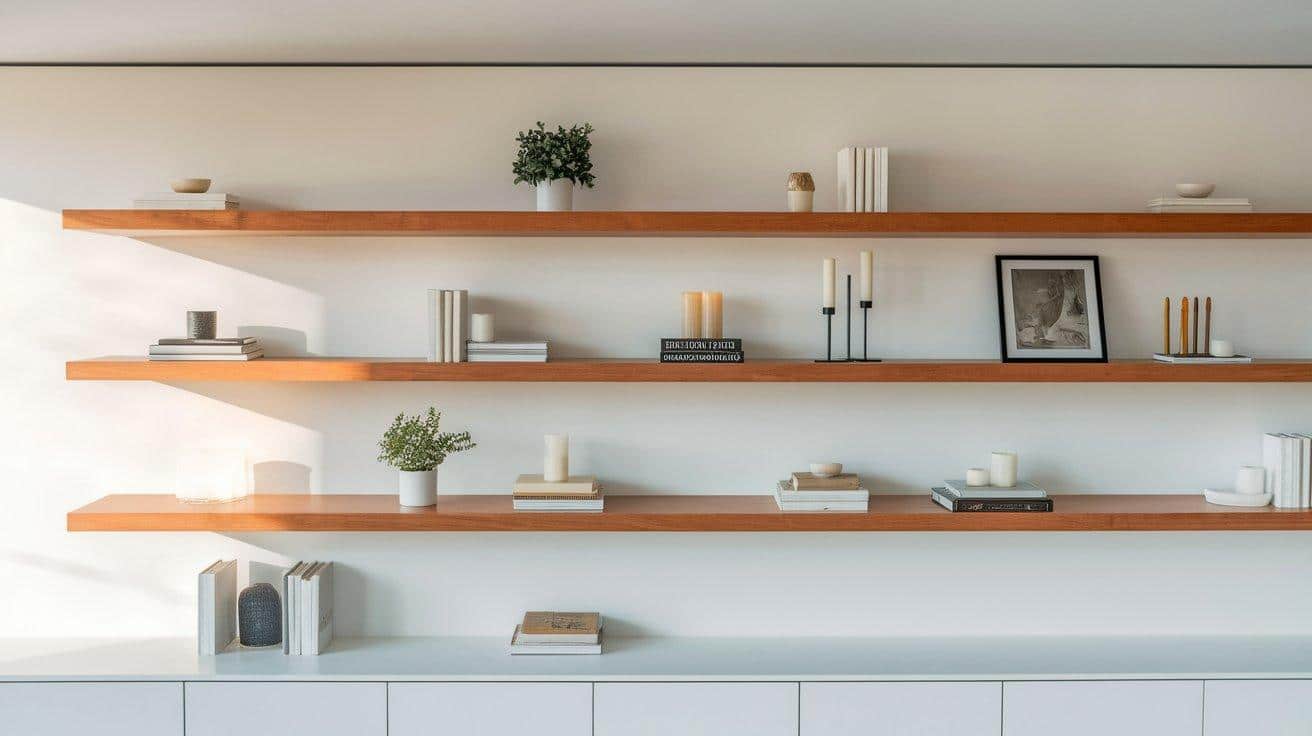
Simple floating shelves made from manufactured wood can instantly update a space. They work beautifully in kitchens, bathrooms, or living rooms, providing stylish storage solutions without heavy visual clutter.
5. Customized Closet Systems

Particleboard or laminated MDF can be used to design custom closet organizers with drawers, hanging sections, and shoe racks. A well-planned closet system adds value to your home and makes daily life more organized and efficient.
6. Decorative Ceiling Beams
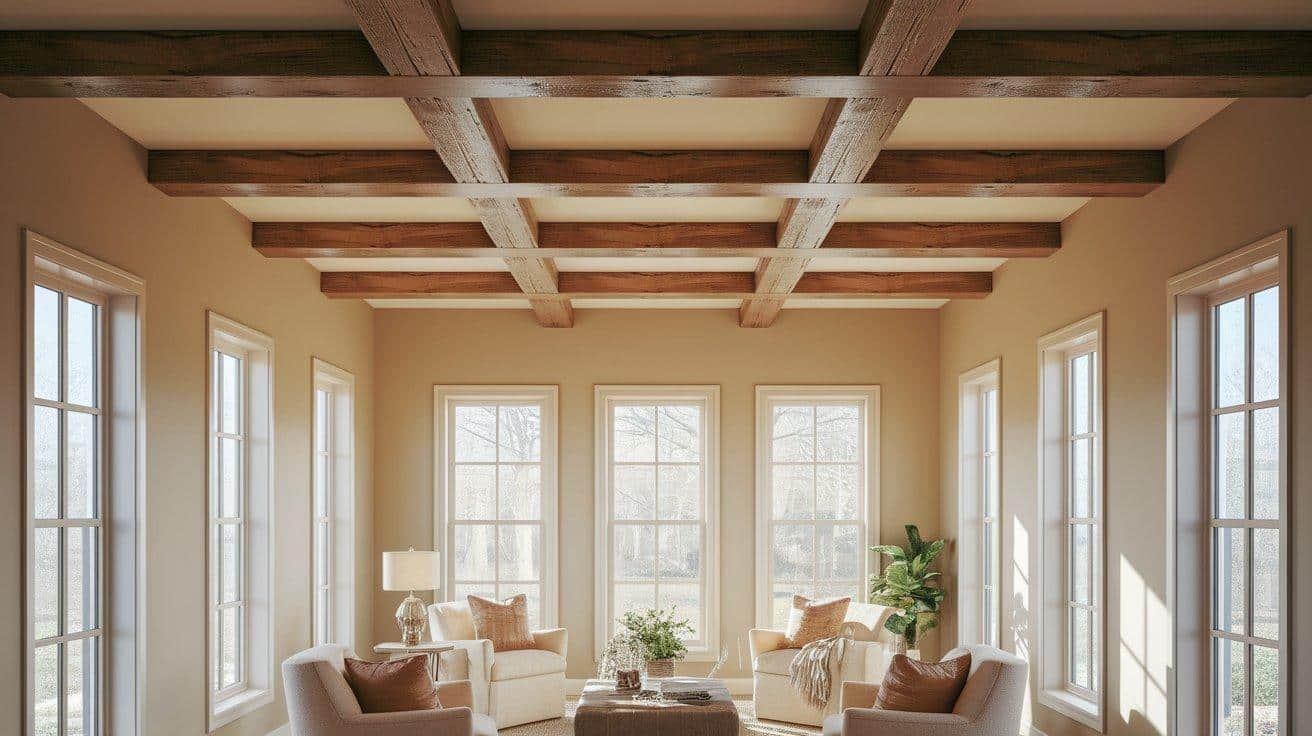
Lightweight manufactured wood beams can replicate the look of solid wood ceiling beams without the heavy cost or structural concerns. Faux beams add architectural character and a cozy, rustic charm to open spaces.
Choosing the Right Manufactured Wood for Your Project
MDF — Perfect for Painted Furniture
If your project involves furniture that will be painted, MDF (Medium-Density Fiberboard) is the top choice. It has a smooth, flawless surface with no knots or grain patterns, allowing paint to glide on evenly for a sleek, professional finish.
Plywood — Built for Strength and Stability
When strength matters — like in subflooring, roofing, or wall sheathing — plywood delivers. Its layered construction resists warping and moisture, making it ideal for structural projects that need lasting support.
Particleboard — Smart Choice for Budget Projects
For cost-effective shelving, closet interiors, or garage storage, particleboard is a practical option. Cover it with laminate or veneer to improve durability and achieve a finished look without breaking the bank.
Protecting Your Manufactured Wood
-
Keep it dry to prevent swelling and damage.
-
Always seal edges, especially for MDF and particleboard, which are more vulnerable to moisture.
-
Use the right fasteners and support spacing based on the material type.
-
Follow the manufacturer’s care instructions for the best long-term results.
Tip: Choose wisely based on your project’s needs, and manufactured wood can deliver beauty, durability, and value — all while making the most of modern materials.
5 Common Myths About Manufactured Wood
Myth 1: Manufactured Wood Is Weak and Flimsy
→ Truth: High-quality engineered wood products like Laminated Veneer Lumber (LVL) and Cross-Laminated Timber (CLT) are often stronger and more stable than solid wood, especially for structural applications.
Myth 2: Manufactured Wood Looks Cheap
→ Truth: With modern veneers, laminates, and finishes, manufactured wood can achieve stunning appearances that rival natural hardwood, at a fraction of the cost.
Myth 3: It’s Bad for the Environment
→ Truth: Many manufactured wood products are actually more eco-friendly than solid wood, as they maximize the use of smaller, fast-growing trees and recycled wood fibers, reducing pressure on old-growth forests.
Myth 4: It Can’t Handle Moisture
→ Truth: While some types (like raw MDF) are sensitive to water, others — like marine-grade plywood and moisture-resistant MDF — are specifically engineered for humid and wet environments.
Myth 5: Manufactured Wood Furniture Doesn’t Last Long
→ Truth: Well-made pieces can last decades if properly cared for. The key is choosing the right type of engineered wood for the intended use and protecting it against damage, just like with solid wood.
Conclusion
Manufactured wood isn’t just an alternative — it’s the future of smart, sustainable living. With its versatility, strength, and eco-friendly benefits, engineered wood is redefining everything from home interiors to modern construction.
Choosing manufactured wood means embracing innovation without sacrificing beauty, performance, or environmental responsibility.
Whether you’re remodeling your kitchen, building custom storage, or upgrading your furniture, manufactured wood offers endless possibilities at a fraction of the cost.
The next time you admire a sleek cabinet or sturdy beam, remember: it’s more than just wood — it’s progress built into every layer.
Frequently Asked Questions
Is Manufactured Wood Real Wood?
Yes, manufactured wood is real wood — it’s made from wood fibers, particles, or veneers combined with adhesives. Unlike solid wood cut directly from a tree, it uses smaller wood pieces to create strong, efficient, and versatile products.
What Is Another Name for Manufactured Wood?
Another name for manufactured wood is engineered wood. It refers to a range of products made by binding together wood fibers, particles, or veneers with adhesives. Engineered wood is designed to improve strength, stability, and resource efficiency compared to traditional solid wood.
How Long Does Manufactured Wood Last?
Manufactured wood can last several decades with proper care. Its lifespan depends on the type, quality, and how well it is protected from moisture, heavy wear, and environmental damage.

